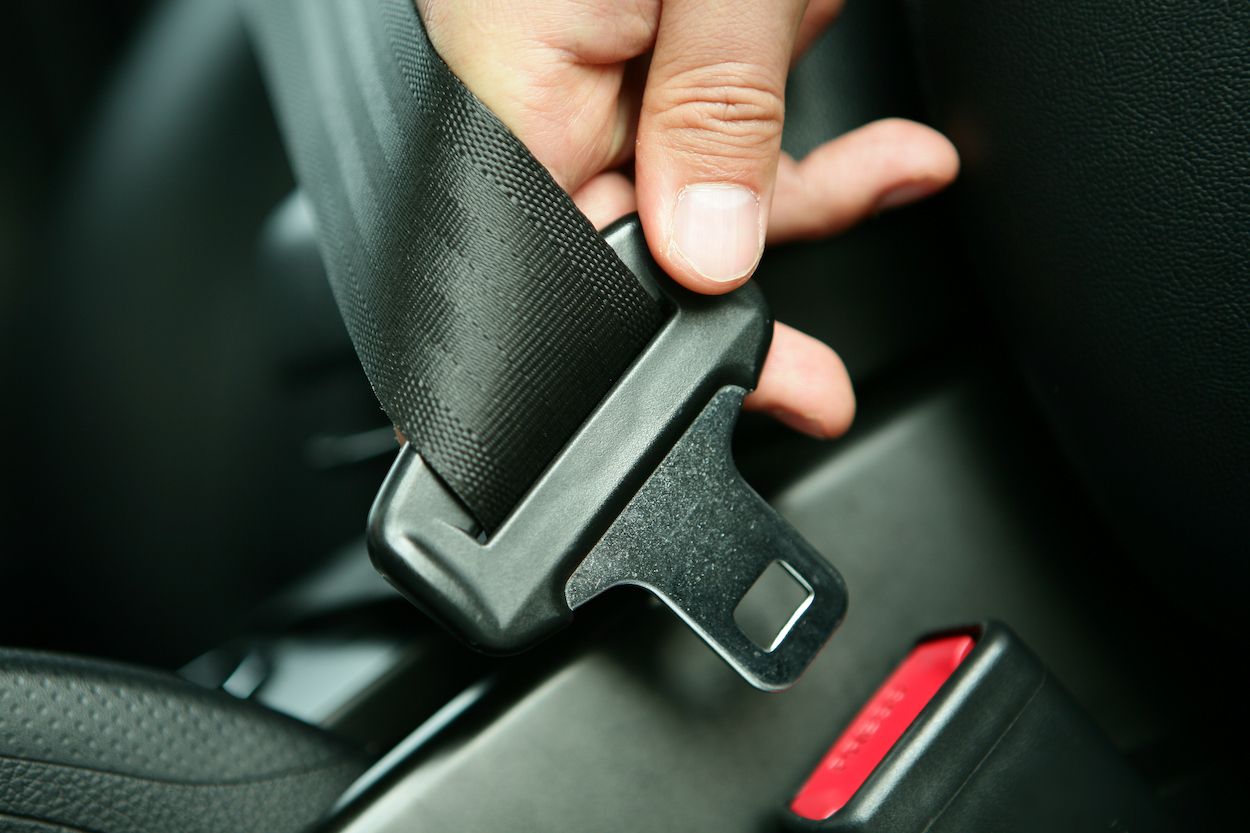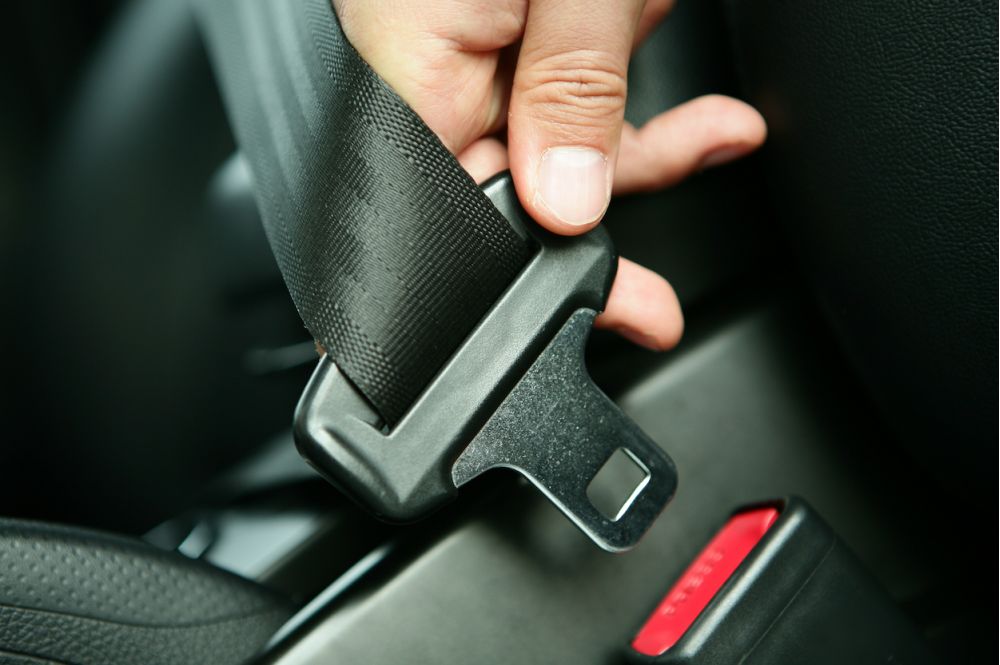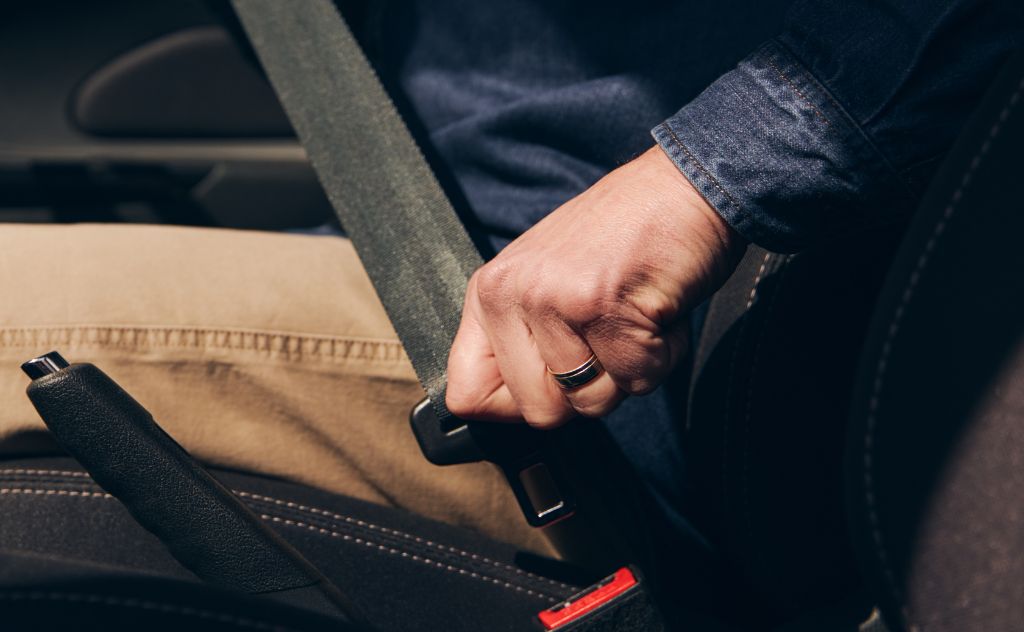- Home
- Practice Areas
- Car Accidents
- Truck Accidents
- Motorcycle Accidents
- Bus Accidents
- Drunk Driving Accidents
- No Fault & Uninsured Motorist
- Pedestrian & Bicycle Accidents
- Boating Accidents
- Dog Bites
- Swimming Pool Accidents
- Back & Spinal Cord Injury
- Head & Brain Injuries
- Fractures, Sprains & Soft Tissue Injuries
- Passenger Injuries
- Wrongful Death
- View All
- Practice Areas
- Attorneys
- Attorneys
- About Us
- Testimonials
- Settlements
- About
- Blog
- Contact Us
Common Types of Seat Belt Injuries Caused by Accidents



- Home
- Blog
- Car Accident
- Common Types of Seat Belt Injuries Caused by Accidents
Wearing a seat belt can literally save your life. According to reports compiled by the National Highway Traffic Safety Administration (NHTSA), seat belts have reduced motor vehicle deaths by 43%. However, in the case of a car accident, the seat belt itself can cause its own injuries. If you show any signs of seat belt-specific injuries, you must seek medical attention as soon as possible. Leaving injuries untreated, even if they appear minor, can cause issues later. If you are worried about your medical bills, Matz Injury Law can diligently help you fight for the compensation you deserve.
Why Do Seat Belt Injuries Happen in Michigan?
While seat belts help prevent certain accident-related injuries, including those encountered if ejected from the passenger vehicle, the devices themselves can cause specific bodily injuries.
The safety belts are meant to restrain you in place should a car crash occur by means of a three-point harness. The three points span across your shoulder, chest, and abdomen, all considered impact sites that receive the most force.
Due to this design and the transmitted force from the seat belt restraint to the driver or passenger during an auto accident, seat belt-related injuries can occur. Seat belt injuries happen because of blunt force trauma to the shoulder, chest, or abdomen areas, often resulting in internal damage.
The severity of your seat belt injury will depend on the severity and speed of the collision, whether the seat belt is worn properly by vehicle occupants, and if the seat belt malfunctions in any way.
What Are the Most Common Seat Belt Injuries?
In collisions or abrupt stops, your seat belt will lock up, restraining you for protection. When this happens, the following seat belt injuries can occur:
Scrapes and Cuts
Scrapes and cuts may not seem like serious injuries, but they do need examining by a medical professional soon after the accident. The safety belts can dig into your skin and cause lacerations that may be deep. To prevent infection or excessive scarring, a doctor will need to treat and monitor your cuts. In addition, the injuries on the surface of the skin can indicate internal organ damage or soft tissue injuries as well, so never dismiss scrapes and cuts for being too minor for medical attention.
Chest and Shoulder Injuries
Since the restraining harness crosses the body, chest and shoulder injuries are also common. You may suffer dislocation of the shoulder, torn or pulled tendons or ligaments, or a variety of chest injuries.
The chest area may suffer deep bruising, which can cause difficulty breathing and pain. If the force is strong enough, fractures to the clavicle, ribs, or sternum are possible. A sore chest or shoulder needs a medical examination to treat and determine if you have any internal injuries. The location of the sternum puts essential organs at high risk and, when damaged, can also result in a fatal injury.
Seat Belt Sign
A seat belt sign is a distinctive abrasion, contusion, or bruise that expands across the chest and abdomen in the areas where the body comes into contact with the restraining belt. You will be able to see the lines or sections where the seat belt sits across your body. You may experience injury to bones, organs, and soft tissue anywhere along this sign.
Seat Belt Syndrome
Seat Belt Syndrome is the all-encompassing term for suffering seat belt sign marks with accompanying severe internal injuries. The serious injuries may be a fracture of the spinal vertebrae or internal damage to the abdomen. A sudden stop, such as experienced in motor vehicle crashes, can result in the seat belt restraining the body while also throwing it slightly forward. When this happens, the intra-abdominal organs experience a crushing effect between the belt and the spine and can be damaged. Injury can also occur to the thoracic or lumbar spine, lungs, heart, bladder, or kidneys.
Abdominal Trauma
Trauma to the abdomen occurs when the seat belt locks up and adds pressure to this area to restrain you. Abdominal injuries can occur, affecting the internal organs, soft tissues, muscles, and ligaments located here. Those who suffer abdominal trauma often experience bruising, tenderness, and pain either immediately or in the hours and days ahead.
Seat Belt Fractures
Due to the placement of the three-point harness seat belt, fractures can occur in different parts of the body in a car accident. Fractured or bruised ribs are especially common and can be dangerous due to their proximity to vital organs. The sternum and clavicle are highly susceptible to fractures as well, and severe spinal fractures are also possible.
Signs You Have a Seat Belt Injury
After a car accident, you need to know the signs of a seat belt injury so you can seek help right away. The most noticeable sign will be abrasions or bruises in the shape of the seat belt on your neck, shoulder, chest, and abdominal areas. Specific symptoms of an injury may include:
- Stiffness or tenderness
- Mild or severe chest pain
- Neck pain and limitation in movement, possibly indicating whiplash
- Difficulty breathing
- Abdominal pain
- Vomiting or coughing up blood
- Changes in urination or bowel movements, including blood in your urine or stools.
- Paleness or dizziness
- Back pain or weakness in the legs, potentially indicating damage to the lower back
What to Do After a Seat Belt Injury
Following an accident, it is imperative that you undergo a medical examination and evaluation to determine if you sustained any injuries. You may not recognize symptoms or experience pain to alert you that something is wrong right away. Do not disregard any cuts and scrapes as minor as they may indicate internal damages unseen by the eye. Notice how you are breathing, also. Chest trauma can occur due to the seat belt locking up, and you may need an X-ray or CT scan to determine the exact injury.
The aftermath of a car crash is often stressful, and you may underestimate the pain, stiffness, or other symptoms you experience. For this reason, a trip to the emergency department is in your best interests. Seat belt syndrome can lead to severe injuries that can affect you for the rest of your life and even lead to death if not treated as soon as possible.
How Long Do Seat Belt Injuries Last?
How long your seat belt injuries will last depends on each injury. Superficial cuts can take just a few days to heal, whereas bruised, dislocated, or fractured ribs may take months. You will need to follow all the treating physician’s directions and may need to take medication for pain, to prevent infection, or for other medical reasons.
For the more severe injuries, you may need much longer to heal. Seat belt syndrome, if untreated, can cause lifetime complications, leading to impairments and permanent disability. It can even be fatal, resulting in organ failures and dangerous infections.
How to Prevent Seat Belt Injuries
While injuries can directly result from the functioning of seat belts, these restraining devices can provide protection and save your life. To give you a better chance at avoiding seat belt-related injuries if involved in a car accident, here are three tips.
1. Wear Your Seat Belt Properly
For maximum safety and protection, the NHTSA emphasizes that you must always wear your seat belt properly, even if you find it somewhat uncomfortable. The driver, front-seat passenger, and any backseat occupants should always wear seat belts while in a moving vehicle. The proper use of seat belts includes the following:
- Start by securing the shoulder and lap harness belt across your rib cage and pelvis. These two areas of the body can better withstand impact forces experienced in a motor vehicle accident.
- Position the shoulder portion of the belt across the chest diagonally. Make sure it is not up against your neck but at the midway point of your shoulder.
- Avoid tucking the shoulder belt under your arm or behind you to increase comfortability, as this can lead to less protection and severe injury in the event of a crash.
- Adjust the lap belt section so it sits evenly across your hips and not the abdomen.
2. Watch Out for Fit
In addition to increasing comfort, the right fit of your seat belt can increase protection. If your current passenger vehicle seatbelts do not fit as described above, become familiar with how to use the seat belt adjuster. Adjust the fit until the belt fits snugly against your rib cage and pelvis.
If this action still does not provide the fit you need or the adjuster malfunctions, contact the car manufacturer or dealer and ask about options, such as a seat belt extender or adjuster replacement. Older vehicles may only have lap belts, so ask the manufacturer how to upgrade to the three-point harness. Also, make sure your seat belt is not too tight or too loose. You want a snug yet comfortable fit.
3. Take Extra Precautions If Pregnant
Pregnant women need to take additional precautions when wearing a seat belt to protect themselves and their unborn baby. Continue wearing a seat belt throughout your pregnancy. Secure the shoulder strap down between your breasts, and position the lap belt snugly across your pelvis just below the abdomen. Adjust your seat for comfort but remain upright and provide as much room as possible between your abdomen and the steering wheel.
Non-Fatal Crashes Cost Victims $62 Billion
You can do everything right and still owe a fortune after a car accident. Medical expenses for injuries can escalate before you even have a chance to heal, and this can negatively impact your finances. While wearing a seat belt can protect you from injury, it can also cause certain injuries that may potentially need long-term treatment or cause complications that can be costly.
Matz Injury Law can help you determine the true cost of your car accident — and help you get full compensation. Hiring a lawyer will, on average, get you $50,000 more in compensation. We work for you and will thoroughly examine your case, compile strong evidence, talk with insurance companies, strive for a settlement that will meet your needs, and, if necessary, represent you in court. Call our experienced law firm today at 866-226-6833 or submit our online contact form and schedule a free consultation.

Written By Steven Matz
Steven J. Matz is a founding shareholder of Matz Injury Law. The firm’s concentration is on personal injury litigation, with an emphasis on traumatic brain injury.
Speak To an Attorney
"*" indicates required fields







The maximum contingency fee permitted by law is actually 331/3%. Michigan court rules require that the attorney fee be computed on the net sum recovered after deducting all disbursements properly chargeable to the enforcement of the claim.
We can charge 22% while virtually all other injury attorneys charge 331/3% because we are very, very, good at obtaining results for our clients.
We do not spend millions of dollars on television ads; instead, we offer a lower fee to all our clients. We do not have dozens of lower paid associates handling our work. All our clients are represented by Steven and Jared Matz. Steven Matz started the firm in 1977 and since then has dedicated his life to representing injury victims. Jared joined the firm in 2016 but grew up listening to stories, discussing theories, and generally learning at the dinner table about how to effectively and compassionately represent injury victims. Jared Matz was literally born to represent individuals involved in motor vehicle crashes.
All of our cases are handled on a contingency fee and all our cases are handled at 22%. Whether the case settles or goes through trial, the fee does not change. While our competitors make excuses as to why they charge so much, we are obtaining results for our clients at a lower fee.
At a typical television advertising law firm, your first call will be handled by a receptionist, who may refer you to an intake person, who will discuss your claim with an intake manager, who then discusses your claim with an associate, who may then report to a partner. You may never speak with the person whose name is at the top of the letterhead. At Matz Injury Law you will always speak with either Steven Matz or Jared Matz.

© 2024 Matz Injury Law

